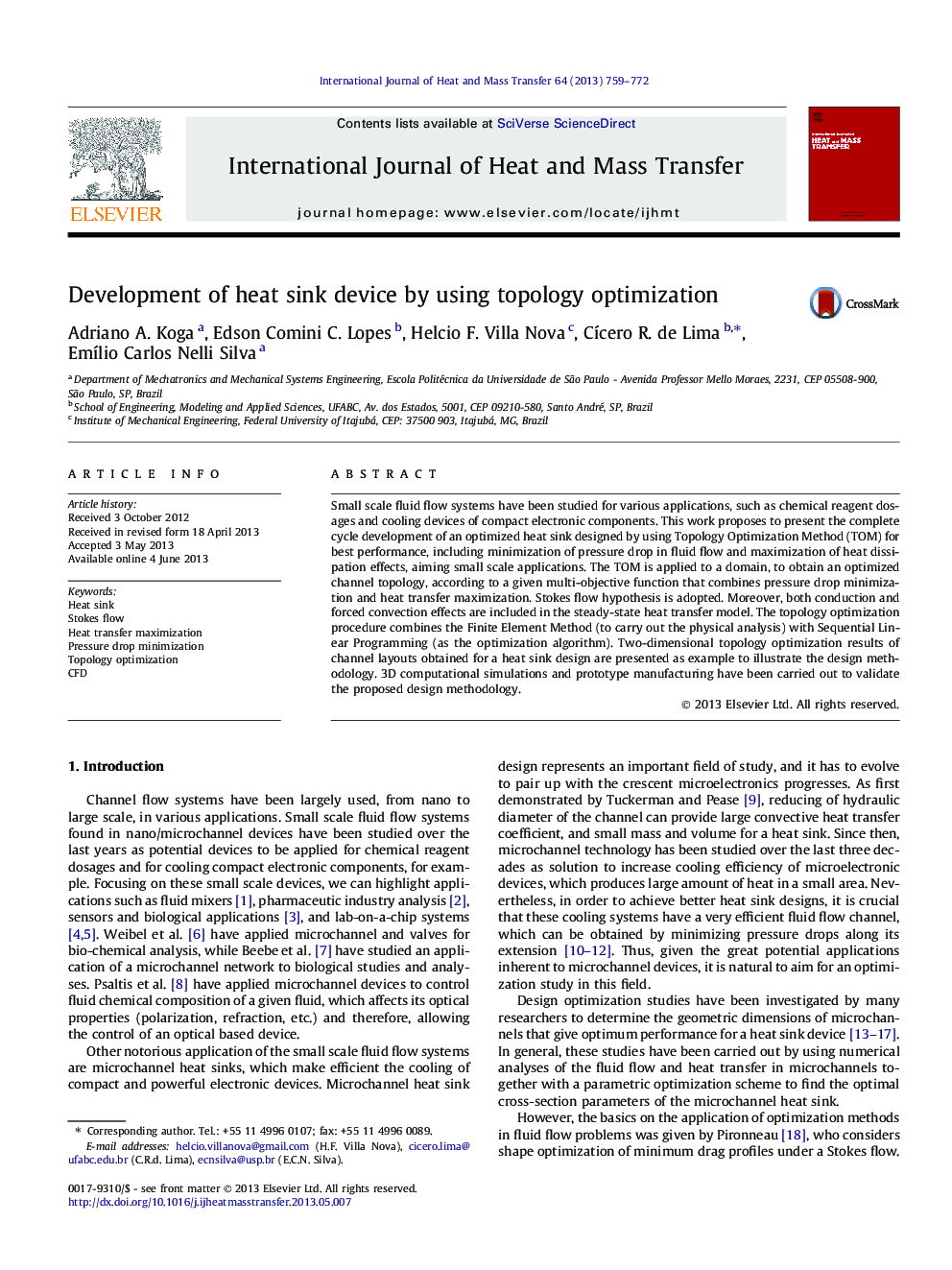| Article ID | Journal | Published Year | Pages | File Type |
|---|---|---|---|---|
| 7058859 | International Journal of Heat and Mass Transfer | 2013 | 14 Pages |
Abstract
Small scale fluid flow systems have been studied for various applications, such as chemical reagent dosages and cooling devices of compact electronic components. This work proposes to present the complete cycle development of an optimized heat sink designed by using Topology Optimization Method (TOM) for best performance, including minimization of pressure drop in fluid flow and maximization of heat dissipation effects, aiming small scale applications. The TOM is applied to a domain, to obtain an optimized channel topology, according to a given multi-objective function that combines pressure drop minimization and heat transfer maximization. Stokes flow hypothesis is adopted. Moreover, both conduction and forced convection effects are included in the steady-state heat transfer model. The topology optimization procedure combines the Finite Element Method (to carry out the physical analysis) with Sequential Linear Programming (as the optimization algorithm). Two-dimensional topology optimization results of channel layouts obtained for a heat sink design are presented as example to illustrate the design methodology. 3D computational simulations and prototype manufacturing have been carried out to validate the proposed design methodology.
Related Topics
Physical Sciences and Engineering
Chemical Engineering
Fluid Flow and Transfer Processes
Authors
Adriano A. Koga, Edson Comini C. Lopes, Helcio F. Villa Nova, CÃcero R. de Lima, EmÃlio Carlos Nelli Silva,
